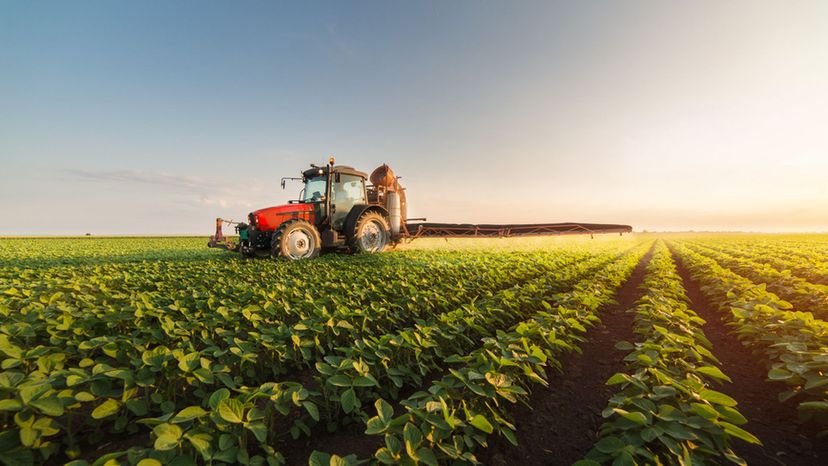
About This Quiz
They're fun, they're useful, and they're not just for the farmland. Tractors can do so much, and there are so many varieties to choose from! In this quiz, we'll test your knowledge of tractors. If you fail, we won't make you plow a field.Tractors completely transformed agriculture as we know it. Farming practices have never been the same.
Horses once did the jobs that tractors do today. They were responsible for dragging heavy things.
Tractor front end loaders are the heroes of modern agriculture and industry. They lift heavy things, and they can be attached to various implements.
Advertisement
A tractor slasher revolutionizes the way that you mow a large lawn. It's an attachable implement that cuts through grass, sometimes also called a bush hog.
Tractors originally had metal wheels! In the 1930s, pretty much all tractors had steel wheels and spikes for traction.
The front end loader tractor was invented in Sweden in 1958. The company that developed it was Alo.
Advertisement
Tractors have high levels of torque. That's why they're able to tow heavy trailers and machinery, but they don't go very fast.
A long, winding country road is no friend to the tractor thanks to its cumbersome steering. Still, there are so many other advantages to them that no one cares.
Tractors don't reach high speeds. If you push it to go too fast, the frame might become unstable and it might tip over.
Advertisement
The fastest tractor on record actually reached speeds of 96 mph. It is not recommended that you try this at home!
In the late 1800s, steam-engine tractors were invented. Most people thought that this was a bad idea due to explosion hazards.
The first gas-powered tractors were invented in the 1890s. These didn't become ubiquitous until the 1920s.
Advertisement
According to the World Bank, there are as many as 26 million tractors in operation today. This goes to show you how important they are.
We hope you got that one right. 1/3 of the energy used for farming is used by tractors!
The word tractor comes from "trahere," which means "to pull" in Latin. The word started to be used in reference to the tractor engine in 1859.
Advertisement
Almost all tractors have diesel engines. They don't go very fast, but they're quite powerful.
Tractors have high, mid, and low horse power PTO. That makes them quite versatile. They can pull heavy or light loads.
John Deere began designing and manufacturing diesel engines in 1949. In 1953, Deere launched the iconic model 70.
Advertisement
Thee LeTourneau L-2350 is the world's largest front end loader. It is produced in Longview, Texas.
Giant tractors can have up to 12 tires. These tires can be so large that they stand taller than a human.
Many tractors have a PTO shaft in both the front and the back. The PTO shaft allows implements to draw energy from the engine.
Advertisement
With the introduction of the gas engine, the tractor rose in popularity. There were 3.4 million tractors by 1950, and only 600 in 1907.
Rubber tires were finally invented for tractors in 1932. This improved operation, speed, and lowered the fuel consumption.
John Deere is the most common tractor in use today. The Case tractor is also quite popular.
Advertisement
There are only two main types of tractors. These include the wheeled tractors and the crawlers, also known as caterpillars.
The PTO, or Power Takeoff, was invented in 1918. It transmits power from the engine to the implement.
Both diesel power and 4-wheel drive helped to increase pulling power in the '50s and '60s. These innovations led to the tractors that we see today.
Advertisement
Today's tractor can pull cultivators, plows, and mowers. They can even power stationary devices like winches and saws.
Not only do tractors pull things, but they push things too! They're great for moving earth and snow.
Even though tractors have engines that could make them go fast, the gearbox converts this energy, increasing the tractor's ability to pull things.
Advertisement
The earliest tractors were designed like little steam locomotives. They were described as "coal-powered lumbering beasts."
These famous words come from Henry Ford. Ford, like many others, sought a better alternative.
The drawbar has the heavy task of pulling the tractor's implements. The drawbar can pivot so that a tractor can still turn corners.
Advertisement
The hydraulic hitch is responsible for raising and lowering implements on and off the ground. This is something no horse could ever do.